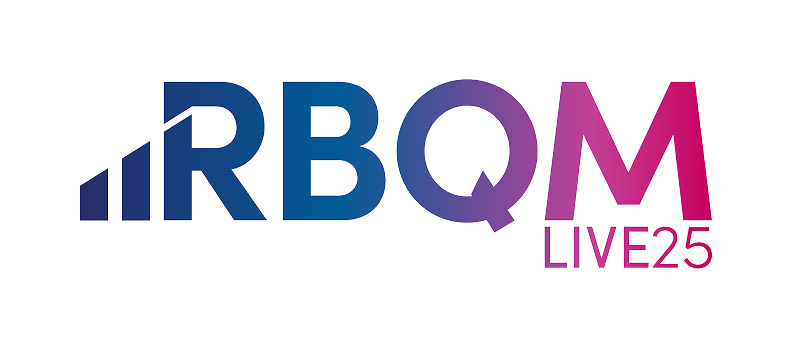Part Seven
In the latest of our eight-part ‘Insights from the Industry’ series, we caught up with Angie Maurer, Co-Founder & CEO at Zynapsys. Here’s what she had to share with us.
When it comes to the practical implementation of Risk-Based Monitoring, where do you observe differences in current best Risk-Based Monitoring practices between companies and CROs of different size?
There is currently no standard way of implementing RBM across the industry. In my opinion, the first thing that any company seeking to implement this new approach should do is undertake an organizational assessment. They should consider available resources and budget, as well as examine what the company needs are, including its vision and goals etc, and importantly, its expectations of the RBM program.
With any RBM implementation, it is important that organizations are realistic about what is achievable and feasible, and take that into consideration during the program design phase. So are you implementing a simple RBM function, or are you developing a more holistic program which takes into consideration other departments and functional areas that will be impacted by RBM.
Looking at where the industry is now, I think a lot of companies are ‘dipping their toes in the water.’ We have seen much more prevalent implementation of RBM in the large pharma space, particularly by the top two, mainly because there is an availability of funding. We are also seeing some sponsors considering how they can embed RBM within their organizations as a standard capability, rather than as an isolated practice in one off trials, which is promising.
We have spent a lot of time with the smaller pharma and biotech companies where the focus tends to be on how they can actually go about this within an organization of their size. As small pharma companies typically outsource much of their clinical trial management to CROs, there is a question over how they should manage the adoption of RBM. Should they just outsource it? Or should they take certain components on? For example, the central monitoring. In my opinion, much of it comes down to whether they are going to get anything out of it from an efficiency or value perspective. Or are they so small that it’s not worth the transition because of the cost implications of transitioning? Are they going to get an outcome from it over the next couple of years to make it worth it? This is an important consideration for small companies that simply don’t have the same financial support as the larger pharma organizations.
What is apparent to organizations of all sizes is that this is a big change, both in terms of culture and systems, as well as technology. In order to drive RBM adoption efficiently, accurately and compliantly, organizations must make sure the changes are communicated to all the relevant people in the business process, including any third party partners. From a technology view point, it’s about systems being able to meet the needs of all users; giving them access to the information they need, when and how they need it, so they have the knowledge to act accordingly.
How are the regulatory authorities likely to respond to the widespread adoption of Risk-Based Monitoring – are they ready for it and why?
I think by releasing the guidance they have to be, but I think there will be a transition period in which the authorities allow the industry to get up to standard. How long that period is, I’m not sure. I think it will be a case of waiting and seeing how this pans out as more and more organizations adopt this approach.
The changes soon to come into force via the ICH (E6) Addendum very much focus on improving quality, but in my view, there will need to be some flexibility on timings for smaller companies that don’t necessarily have the budget or resources to implement RBM as easily or quickly as the larger pharmaceutical organizations.
How do you think that the multitude of electronic systems are going to co-exist as Risk-Based Monitoring takes off? Will other systems become obsolete or will they need to evolve too?
I think we are likely to see the evolution and integration of current systems to incorporate RBM capabilities, as well as the introduction of new technologies.
In my view, our industry has many companies that have spent years developing deep understanding of their markets and customers, and creating innovative, targeted, solutions. For that reason, I don’t think one single company will be able to provide the best quality solution in all the areas needed within one product, and as such, there is a real opportunity for collaboration. By working together in partnership, companies specializing in different areas, for example EDC and monitoring, can create powerful new solutions for the industry.
Much of the early work in Risk-Based Monitoring has a focus on relatively simple KRIs and traffic-light dashboards which are easy to understand. There is a growing need to complement this approach with a more sophisticated and comprehensive analysis known as Central Statistical Monitoring (CSM).
How are companies likely going to adopt these complementary approaches to ensure data accuracy and integrity?
I think companies will be open to CSM because without the support of technology, we can only do so much in terms of the review and analysis of data. These systems deliver not only more transparent and efficient data but the sophisticated technology ensures data is also much more robust, so I think we will definitely see an increase in adoption.
That said, I think budget will be an influence here. I would like to see technology providers develop a flexible platform that will allow even small start-up companies to afford and implement these powerful tools.
Discuss the complexity of defining subjective thresholds using Key Risk Indicators KRIs rather than (or in addition to) the objectivity of comparing one site against the others
I think this comes down to the individual needs of an organization. I personally don’t think you can do one without the other, and that study teams should combine both approaches. What’s important when reviewing risk for a study program is being able to find a way to take subjective information and make it measurable, and easy for study teams to understand.
What are your thoughts on the ICH (E6) Addendum, how to implement the parts outlined in the guidelines practically for the respective area (EDC, Risk-Based Monitoring, etc.) and how the changes could impact current practices?
In terms of practical implementation, the first thing companies would need to utilize is a quality by design/RACT type of tool. Designing the study protocol is critical and implementing this type of tool will ensure the bare minimum of the guidelines are met. Second is the implementation of CSM, and third is the use of a risk tracking system. A risk tracking tool is a way to monitor, manage and rank all of the risks for a study, so by supporting risk control and mitigation, these tools help study teams directly address a large part of section 5.0 of the ICH (E6) Addendum.
A quality management plan, which details how the study team is going to ensure quality throughout the program and summarizes all the key information, is the next step. Organizations can then provide this document as evidence to the regulators during the inspection. Finally, it is crucial for teams to continue with the traditional, ongoing risk review activities, typical of most current trials. By holding regular team meetings, where any issues are discussed and minuted, study teams can ensure risks are highlighted and managed on a regular basis.
In my experience, our industry is very reactive. Everyone is so busy with day-to-day activity, that there is little time or head space take a step back and plan ahead, meaning we are often not as proactive as we could be. With this in mind, I think the ICH (E6) Addendum will really make companies stop and think, and force them to be more proactive in the management of their programs. This will come into play from the very beginning of trials, as companies start to assess risks when they are drafting their protocols, meaning the number of iterations to the program should decrease because of the pro-activeness of planning ahead.



